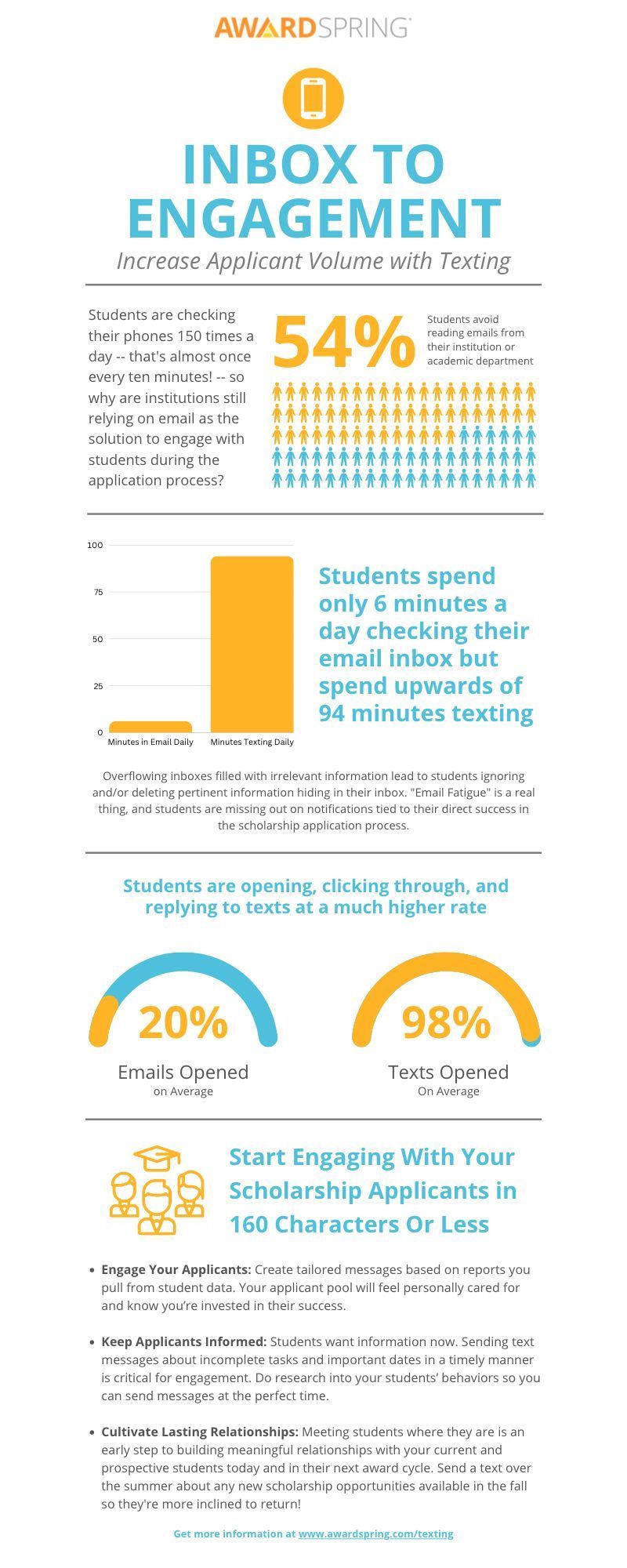From Inbox to Engagement: How to Increase Application Volume with Texting
For many scholarship management administrators, getting incoming and current students to start and finish their scholarship applications and follow-up tasks can be a struggle. Progressing the application and awarding process is simple: meet students where they are – on their phone!
Survey Says: Communication is Changing
Communicating with today’s students via email is becoming increasingly more difficult. In a recent study by Bowling Green State University, it was reported that nearly 40% of students rarely open emails from their advisors and over half of students avoid reading emails from the university and/or academic departments altogether. We see this trend continue in a Purdue University study that found students spend a mere six minutes each day checking their email inbox on average. Additionally, data shows students are less inclined to use their university email accounts and prefer to use their personal email.
So how do we engage this new generation of students when the tried and true method of the past is failing?
Compare the six minutes on average students spend checking their email to the
94 minutes spent on texting alone and the solution becomes clear. This new generation are checking their phones over 150 times a day, reading 98% of their text messages, and replying 4x more to SMS than email.
When scholarship engagement is the goal, texting becomes the solution.
Engage, Inform, and Cultivate
Utilizing texting in your applicant outreach isn't just about moving away from email because the numbers say so. Scholarship fatigue is on the rise and students are giving up before they’ve even started. Providing efficient and convenient methods of communication shows your students that your institution cares about their needs.
- Engage Your Applicants: Create tailored messages based on reports you pull from student data. Make students feel connected to the application process by utilizing personalization tokens. Your applicant pool will feel personally cared for and know you’re invested in their success.
- Keep Applicants Informed: Students want information now. Sending text messages about incomplete tasks and important dates in a timely manner is critical for engagement. Do research into your students’ behaviors so you can send messages at the perfect time (like 2 am during finals week when you know they’re awake!).
- Cultivate Lasting Relationships: Meeting students where they are is an early step to building meaningful relationships with your current and prospective students today and in their next award cycle. Send a text over the summer about any new scholarship opportunities available in the fall so they're more inclined to return!
In 160 Characters or Less
Simplify your outreach. Know your students. See results. No other channel of communication compares to texting when you’re looking to increase applicants.
Want to learn more about how AwardSpring could help your institution increase applicants? Click here to let us know and a member of our team will reach out to you to schedule time to chat!
AwardSpring Blog

On This Site
Request a Product Demonstration
Fill out the form below and someone from our sales team will reach out to answer your questions. If you're an existing customer or student looking for support, please email our support team .
AwardSpring® Privacy Policy Service Description


